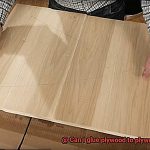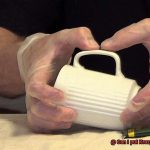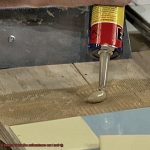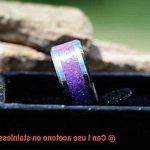A broken tooth can send shivers down your spine. Whether it’s the result of a clumsy stumble, an unfortunate encounter with something hard, or even a rough sports game, the immediate concern is often finding a quick fix to alleviate the pain. But before you reach for that trusty tube of Krazy Glue in your toolkit, let’s dive into the potential risks and benefits associated with this DIY dental treatment.
The notion of using adhesive glue to mend a broken tooth may seem plausible initially. After all, we use glues for various repairs around the house without batting an eye. And it’s no secret that Krazy Glue and other cyanoacrylate-based adhesives boast unparalleled bonding strength. However, when it comes to broken teeth, things get a tad more complicated.
According to dental professionals who have seen it all, using Krazy Glue or any other DIY adhesive on a broken tooth is strongly discouraged. Dr. John Mullaly, a seasoned dentist with over 30 years of experience, emphatically states, “Krazy Glue is not an appropriate solution for repairing a broken tooth. It neither guarantees safety nor effectively restores the tooth’s function and integrity.”
One of the primary concerns when resorting to cyanoacrylate glues on teeth is toxicity. The glue contains chemicals that can be harmful if ingested or if there is direct contact with oral tissues. Dr. Mullaly further explains, “Krazy Glue isn’t designed for use in the mouth; its toxicity can irritate gums, cause inflammation, and potentially damage surrounding healthy teeth.”
Beyond health risks lurks another problem: Krazy Glue falls short as a long-term solution for a broken tooth. Unlike dental bonding materials used by professionals, these adhesives lack durability, flexibility, and aesthetic appeal—essential qualities required to restore a tooth. Our teeth endure immense pressure while biting and chewing, forces that DIY glues simply can’t withstand. This leads to further complications and potential infections down the line.
So, what’s your next move if you end up with a broken tooth? The best course of action is seeking immediate dental assistance from a qualified professional. Dentists possess the expertise and tools needed for a safe and proper repair, ensuring the best possible outcome for your oral health.
The Structure of Teeth and Why Krazy Glue is Not Recommended
Contents
- 1 The Structure of Teeth and Why Krazy Glue is Not Recommended
- 2 The Risks of Using Krazy Glue on Teeth
- 3 Professional Dental Care for Broken Teeth
- 4 Bonding as a Treatment Option for Broken Teeth
- 5 Veneers as a Treatment Option for Broken Teeth
- 6 Crowns as a Treatment Option for Broken Teeth
- 7 Tooth Extraction as a Treatment Option in Severe Cases
- 8 Conclusion
Throughout our lives, our teeth serve us in countless ways, allowing us to enjoy our favorite foods, communicate clearly, and radiate confidence with a beautiful smile. However, accidents can happen, and teeth may occasionally break or become damaged.
While it may be tempting to resort to a quick fix like Krazy Glue to repair a broken tooth, it is crucial to understand why this adhesive is not suitable for dental use. In this article, we will delve into the intricate structure of teeth and explore the potential risks associated with using Krazy Glue for tooth repair.
The Structure of Teeth:
Teeth are remarkable structures consisting of multiple layers that work in harmony. The outermost layer, known as enamel, stands as the hardest substance in the human body, shielding the inner layers from harm and decay. Directly beneath the enamel lies dentin, a resilient yellowish substance that provides strength and support to the tooth. Deep within the tooth lies the pulp, housing nerves and blood vessels that keep the tooth alive.
Why Krazy Glue is Not Recommended:
- Toxicity: Krazy Glue contains chemicals that can pose harm if ingested or come into contact with the delicate tissues inside the mouth. Applying this adhesive to a broken tooth can lead to irritation, inflammation, or even chemical burns.
- Lack of bonding strength: While Krazy Glue may create a temporary bond between two non-biological surfaces, it is not designed to effectively bond with tooth structure. Over time, the bond formed by Krazy Glue may weaken or fail completely, leading to further damage or loss of the tooth fragment.
- Impediment to dental restoration: When a tooth breaks, professional dental treatment is necessary to restore its structure and functionality. Using Krazy Glue can interfere with this process by making it difficult for a dentist to accurately assess and treat the broken tooth. Additionally, the adhesive residue may complicate the restoration procedure and compromise its success.
- Risk of infection: Applying an adhesive like Krazy Glue to a broken tooth can create a barrier that inhibits proper cleaning and disinfection of the affected area. This increases the risk of bacterial growth, infection, and subsequent complications.
- Potential for misalignment: Teeth are intricately designed to fit together seamlessly, and any alteration to their structure can impact overall bite and alignment. Krazy Glue may not provide the necessary stability and precision required to ensure that the broken tooth aligns correctly with the surrounding teeth during the healing process.
The Risks of Using Krazy Glue on Teeth
In the complex realm of dental care, accidents can happen, leaving us with broken smiles. However, reaching for that convenient tube of Krazy Glue may not be the solution to your dental woes. This article aims to explore the potential risks associated with using Krazy Glue on teeth and emphasize why seeking professional dental care is always the best option.
Toxicity and Tissue Damage:
One significant risk of using Krazy Glue on teeth lies in its inherent toxicity. This adhesive contains chemicals that can be harmful if ingested or come into contact with sensitive tissues, such as those present in the mouth. Applying Krazy Glue to a broken tooth can result in irritation, burning sensations, and even tissue damage when it interacts with the gums, tongue, or other oral tissues.
Lack of Bonding Strength:
Another risk stems from the fact that Krazy Glue may not provide a strong and secure bond. Teeth endure constant biting and chewing forces, and Krazy Glue may not possess the necessary strength to withstand these pressures. If the bond fails, it can lead to further damage to the tooth or even cause it to break further.
Interference with Dental Procedures:
Using Krazy Glue on teeth can also impede dental professionals from properly repairing the broken tooth. The adhesive can interfere with dental procedures and may necessitate its removal before any treatment can be administered. Moreover, it can mask underlying dental issues, leading to delayed proper care.
Delay in Seeking Proper Dental Care:
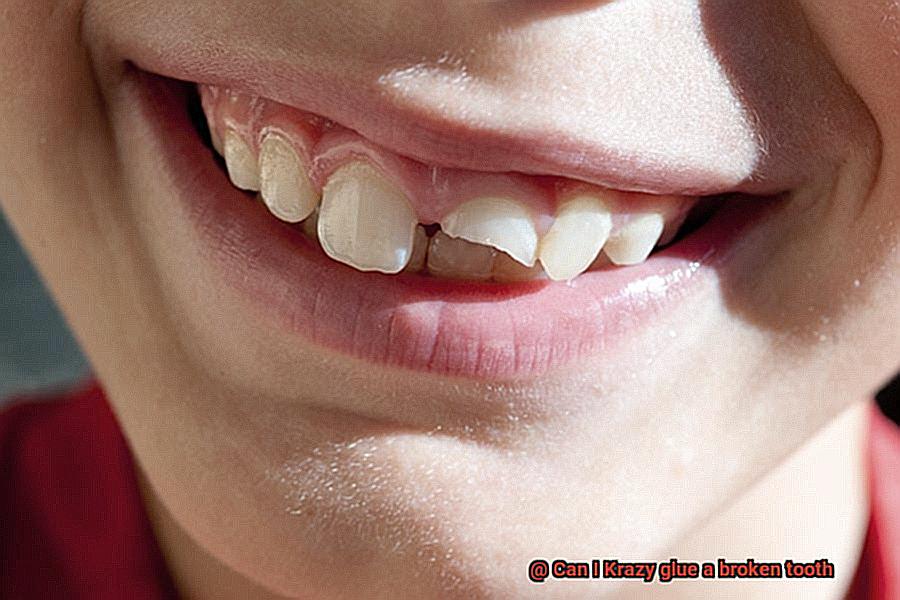
By relying on Krazy Glue as a makeshift solution, individuals may inadvertently delay seeking proper dental care. This delay can exacerbate their oral health in the long run as it fails to address the root cause of the problem.
Professional Dental Care for Broken Teeth
Accidents happen, and a broken tooth can be a real pain – both literally and figuratively. In such situations, it may be tempting to opt for a quick fix, like using household adhesives such as Krazy Glue, to mend your broken smile. However, it is crucial to understand why seeking professional dental care for broken teeth is always the best choice.
Toxicity and Tissue Damage:
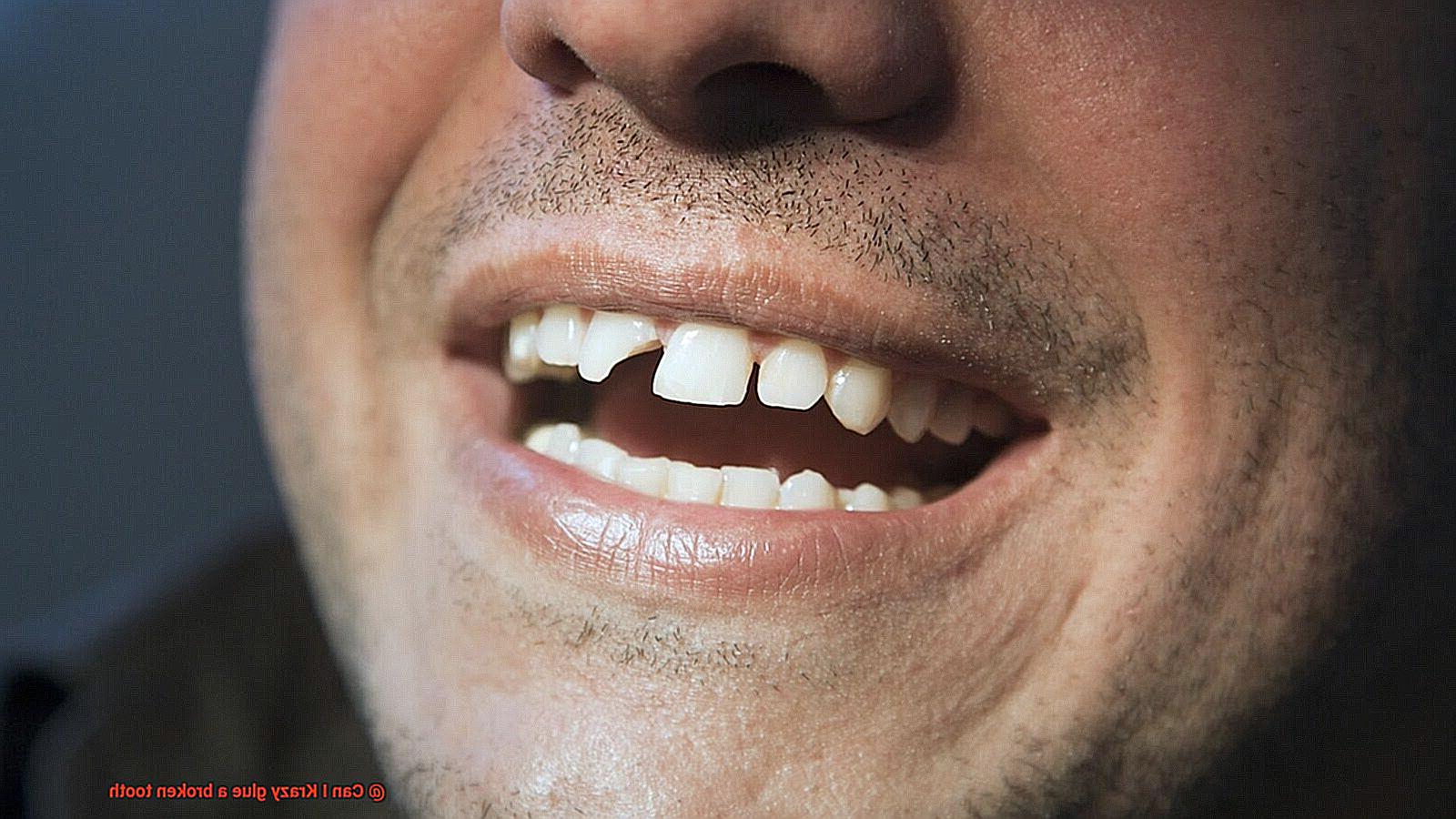
Household adhesives like Krazy Glue are not meant for oral use. They may contain harmful chemicals that can irritate your gums or even be toxic if accidentally ingested. Applying these adhesives to your broken tooth can lead to further damage and potential complications.
Lack of Bonding Strength:
While Krazy Glue works well for fixing household items, it falls short in dental care. These adhesives lack the strength required to hold a broken tooth in place for an extended period. A temporary fix with household adhesives may not last long, leaving you susceptible to additional damage.
Interference with Dental Procedures:
Attempting DIY fixes at home can interfere with future dental procedures. Professional dentists assess the extent of the break and provide appropriate treatment options. Using adhesives like Krazy Glue may complicate their ability to accurately diagnose and treat your tooth.
Professional Treatment Options:
Dentists offer a range of treatment options that surpass the capabilities of household adhesives:
- Dental bonding or fillings for minor breaks: Dentists use tooth-colored materials to repair small portions of a broken tooth, ensuring a natural appearance and restoring functionality.
- Dental crowns or caps for significant breaks: Custom-made crowns restore the tooth’s shape, strength, and appearance, providing a durable solution. Made from porcelain or ceramic materials resembling natural teeth, crowns offer long-lasting results.
- Extraction and tooth replacement: In severe cases where the tooth cannot be saved, extraction becomes necessary. Dentists then recommend suitable replacement options like dental implants, bridges, or dentures to restore your smile and oral function.
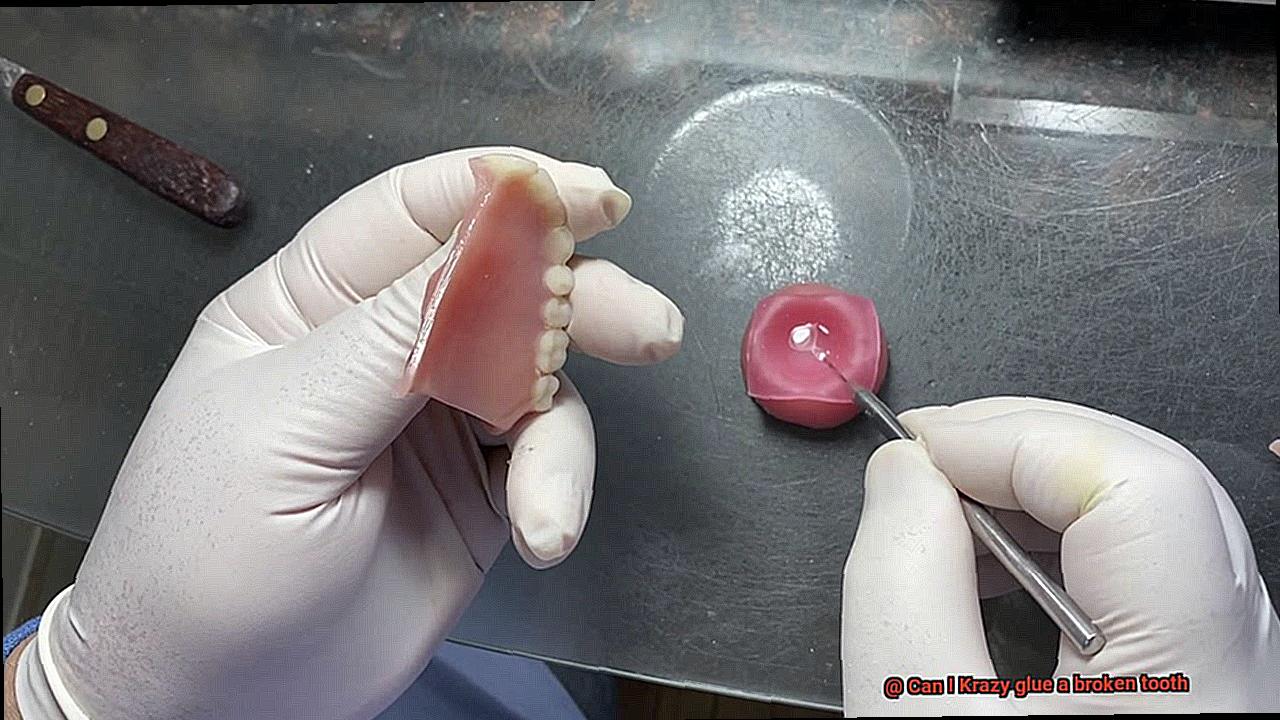
Bonding as a Treatment Option for Broken Teeth
Breaking a tooth can be a distressing experience, but fear not, for dental bonding is here to save the day. This masterpiece treatment option involves using a tooth-colored resin material to repair and restore broken teeth. In this article, we will explore the advantages of bonding as a treatment option and provide examples of how it can be used to repair broken teeth, restoring your smile to its former glory.
Advantages of Bonding:
Aesthetic Appeal:
Bonding seamlessly blends in with your natural teeth, thanks to the availability of resin material in various shades. Your dentist can match it closely to the color of your existing teeth, resulting in a natural-looking repair that enhances your overall appearance.
Restored Functionality:
Not only does bonding improve the appearance of a broken tooth, but it also restores its strength and functionality. The durable resin material can withstand normal biting and chewing forces, allowing you to enjoy your favorite foods without worry. Whether it’s biting into an apple or savoring a juicy steak, bonding ensures your repaired tooth remains strong and sturdy.
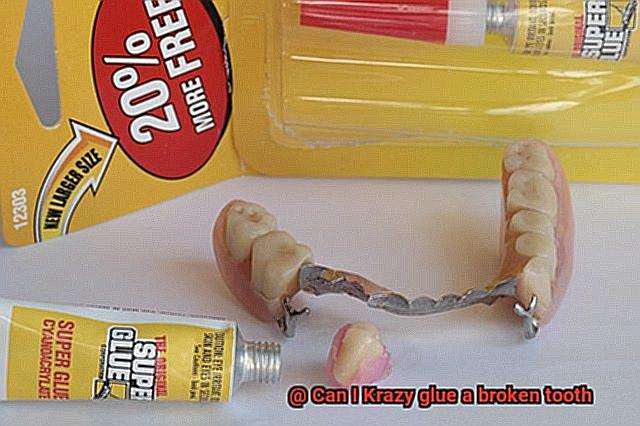
Minimally Invasive Procedure:
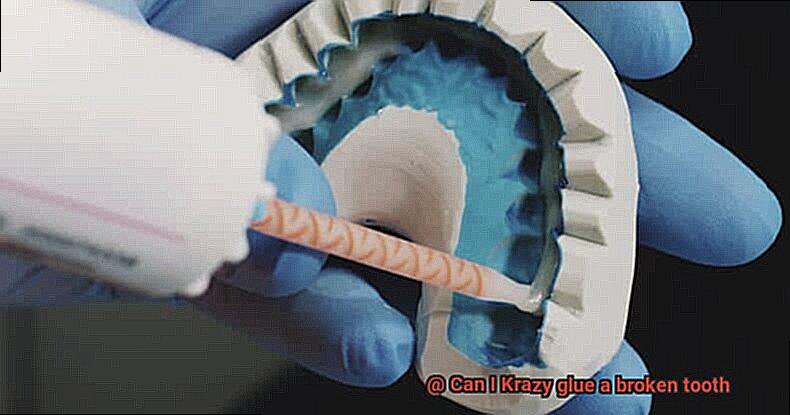
Compared to other options like dental crowns or veneers, bonding is a less invasive procedure. It requires minimal removal of tooth structure, preserving more of your natural tooth and resulting in a healthier and stronger tooth.
Cost-Effective Option:
Bonding is an affordable choice compared to alternatives such as crowns or veneers. This makes it an attractive option for patients seeking an effective and budget-friendly solution for their broken teeth.
Examples of Bonding for Broken Teeth:
- Chipped Tooth: Bonding can fill in a small chip on a front tooth, restoring its shape and integrity with a carefully applied and sculpted resin material that seamlessly blends with the surrounding teeth.
- Fractured Cusp: When a portion of a tooth’s chewing surface breaks off, bonding can rebuild and reinforce the damaged area. By applying the resin material, your dentist can restore the cusp’s function and prevent further damage.
- Gap Closure: Bonding can close small gaps between teeth by adding resin material to the sides of adjacent teeth. This creates a more harmonious and uniform smile.
Veneers as a Treatment Option for Broken Teeth
Breaking a tooth can be a frustrating experience, especially when it affects your smile. But don’t worry, because veneers are here to save the day. Veneers are thin, custom-made shells that are bonded to the front surface of your teeth, and they can work wonders when it comes to fixing broken teeth.
So why are veneers such an effective treatment option for broken teeth? Let’s break it down:
Firstly, veneers can restore the natural shape and color of a tooth, making it look whole and healthy again. Whether your tooth is chipped, cracked, or broken, veneers can give it a new lease on life. By carefully crafting the veneer to match your tooth’s original shape and color, dental professionals can ensure that your smile looks seamless and natural.
Secondly, getting veneers is a relatively simple and painless process. The procedure usually involves removing a small amount of enamel from the affected tooth to make room for the veneer. Impressions of the tooth are then taken and sent to a dental lab where the veneer is custom-made to fit your tooth perfectly. Once the veneer is ready, it is bonded to the tooth using a special dental adhesive. And just like that, your broken tooth is transformed into a beautiful masterpiece.

Moreover, veneers are typically made from porcelain or composite resin material, both of which closely resemble the natural color and translucency of teeth. This means that once your veneer is in place, it will seamlessly blend in with your surrounding teeth, giving you a natural-looking smile.
Lastly, veneers are a long-lasting solution for broken teeth. With proper care and maintenance, they can last for many years. While they may need to be replaced eventually due to wear or damage, they are generally a durable and reliable treatment option.
It’s important to note that veneers may not be suitable for severely broken or structurally compromised teeth. In such cases, other treatment options like dental crowns or implants may be more appropriate. However, if your broken tooth is only minor or cosmetic in nature, veneers can be a great choice to restore your smile.
Crowns as a Treatment Option for Broken Teeth
Today, we embark on a quest to explore the wonders of dental crowns – the unsung heroes that restore your smile, one tooth at a time.
Definition and Process:
A crown is a custom-made cap, akin to a dental knight’s armor, that snugly fits over a damaged tooth. It not only restores the tooth’s shape, size, strength, and appearance but also shields it from further harm. Picture a regal makeover for your smile.
Getting a crown is a journey that spans two visits to your dentist’s kingdom. In the first visit, your tooth is prepared by removing decayed or damaged parts and shaped to accommodate the crown. An impression is taken to create a mold for the crown. While you await the permanent crown’s creation, a temporary one keeps your tooth safe and sound.
During the second visit, the grand moment arrives as the permanent crown is cemented onto your prepared tooth. The dentist ensures a precise fit and matches the crown’s color with your other teeth—no mismatched smiles here.
Materials and Benefits:
Crowns can be fashioned from various materials, but porcelain steals the show. These porcelain beauties seamlessly blend in with your natural teeth, ensuring no one even suspects you’re wearing a crown.
Now, let’s delve into the benefits that crowns bestow upon your oral kingdom:
- Protection: Like an impenetrable fortress, crowns shield weak teeth from cavities and fractures.
- Functionality: Crowns restore proper biting and chewing, allowing you to savor all your favorite treats without worry.
- Aesthetics: Misshapen or discolored teeth transform into picture-perfect pearly whites, elevating your confidence and making you the star of every smile.
- Oral Health: By mending broken teeth, crowns help maintain the alignment of surrounding teeth and promote overall oral health harmony.
Considerations and Maintenance:
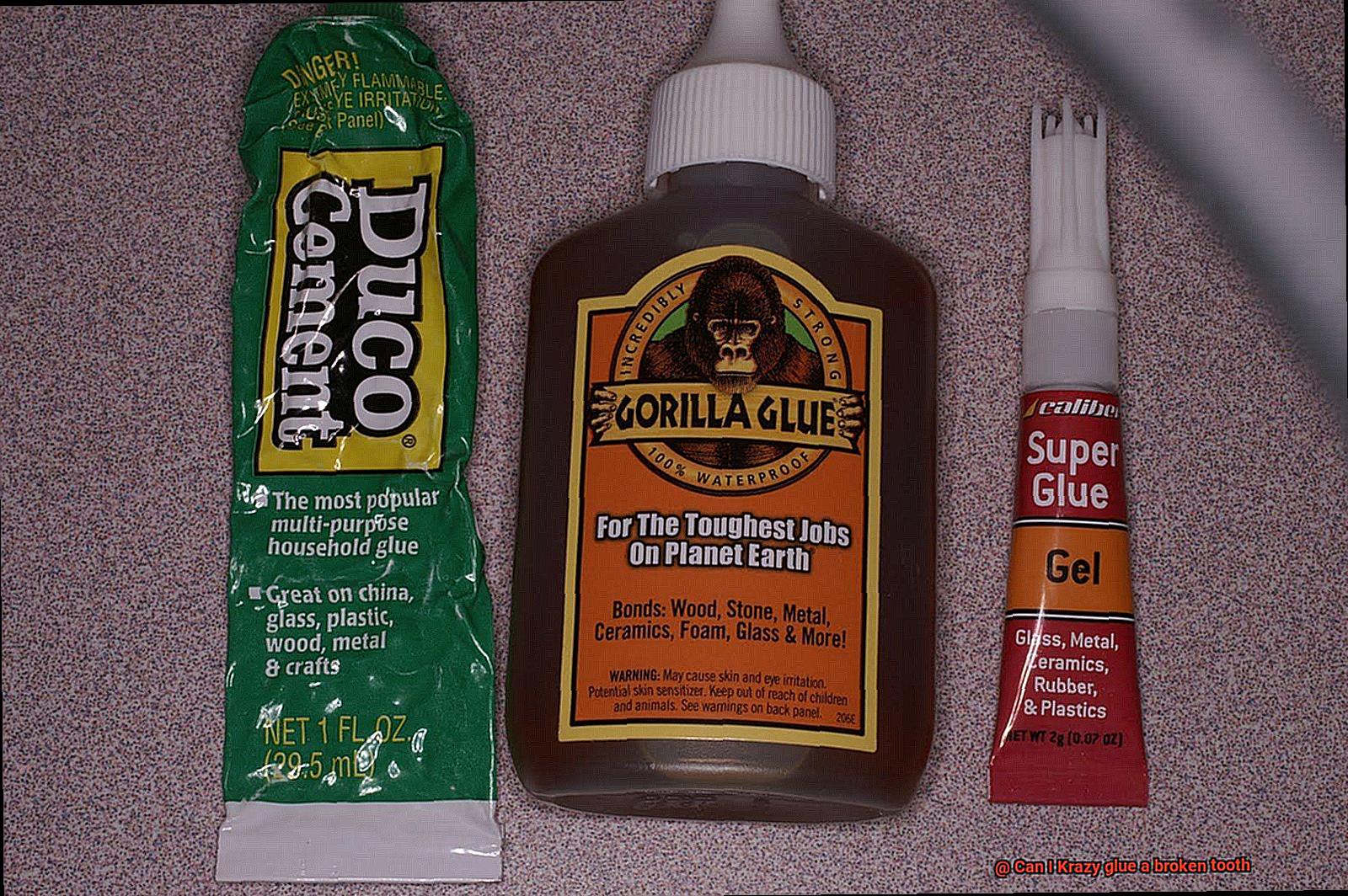
It’s important to note that not all broken teeth can be saved with a crown. The severity of the damage and your overall oral health condition will determine the best course of action. Consulting your dental knight – I mean, dentist – is crucial for a personalized treatment plan.
Even heroes require maintenance. While crowns are generally durable, they may need replacement over time due to wear and tear or other dental issues. Regular check-ups and good oral hygiene practices will keep your crown shining bright for years to come.
Tooth Extraction as a Treatment Option in Severe Cases
Tooth extraction may seem like a drastic measure, but in severe cases of tooth damage or decay, it can be the best treatment option. Let’s explore why extracting a tooth is sometimes necessary and how it can prevent further complications and alleviate pain.
One common reason for tooth extraction in severe cases is extensive damage or fracture that cannot be repaired. Whether it’s due to a sports injury, accident, or advanced tooth decay, sometimes the tooth is beyond salvation. Attempting to salvage it with dental glue or other methods may not be feasible or effective for restoring proper function and aesthetics.
Another reason for tooth extraction is when there is an infection or abscess that has spread to the root of the tooth. An infected tooth can cause excruciating pain and discomfort, and if left untreated, it can lead to more serious health issues. In these cases, extracting the tooth becomes necessary to remove the source of infection and prevent it from spreading further.
Additionally, tooth extraction may be considered if there is overcrowding in the mouth or if a tooth is impacted. Overcrowding leads to misalignment and bite problems when there isn’t enough space for all the teeth. Removing a severely broken or damaged tooth can create space for proper alignment and prevent further complications.
The actual process of tooth extraction is typically performed by a dentist or oral surgeon under local anesthesia to ensure a pain-free experience for the patient. In more complex cases where the tooth is impacted or severely broken, a surgical extraction may be necessary. This involves making an incision in the gums to access the tooth and may require stitches for proper healing.
After the tooth extraction, following post-operative care instructions is crucial for a smooth recovery. This includes taking prescribed pain medications, avoiding irritating foods, and maintaining proper oral hygiene. Regular follow-up appointments help monitor the healing process and address any concerns or complications that may arise.
While tooth extraction may be necessary in severe cases, it’s important to consider alternative options if the tooth is salvageable. Dental crowns or root canal treatments are recommended as alternatives to extraction, as they preserve the natural tooth structure while addressing underlying issues.
Also Read: What glue can I use to reattach a crown?
Conclusion
Krazy glue may seem like a quick fix for a broken tooth, but it’s important to approach dental issues with caution.
While Krazy glue might temporarily hold the tooth together, it is not a suitable long-term solution. The strong adhesive properties of Krazy glue could potentially damage the tooth further or cause harm to the surrounding tissues.
Remember, your oral health is too precious to be entrusted to an adhesive meant for household repairs.


